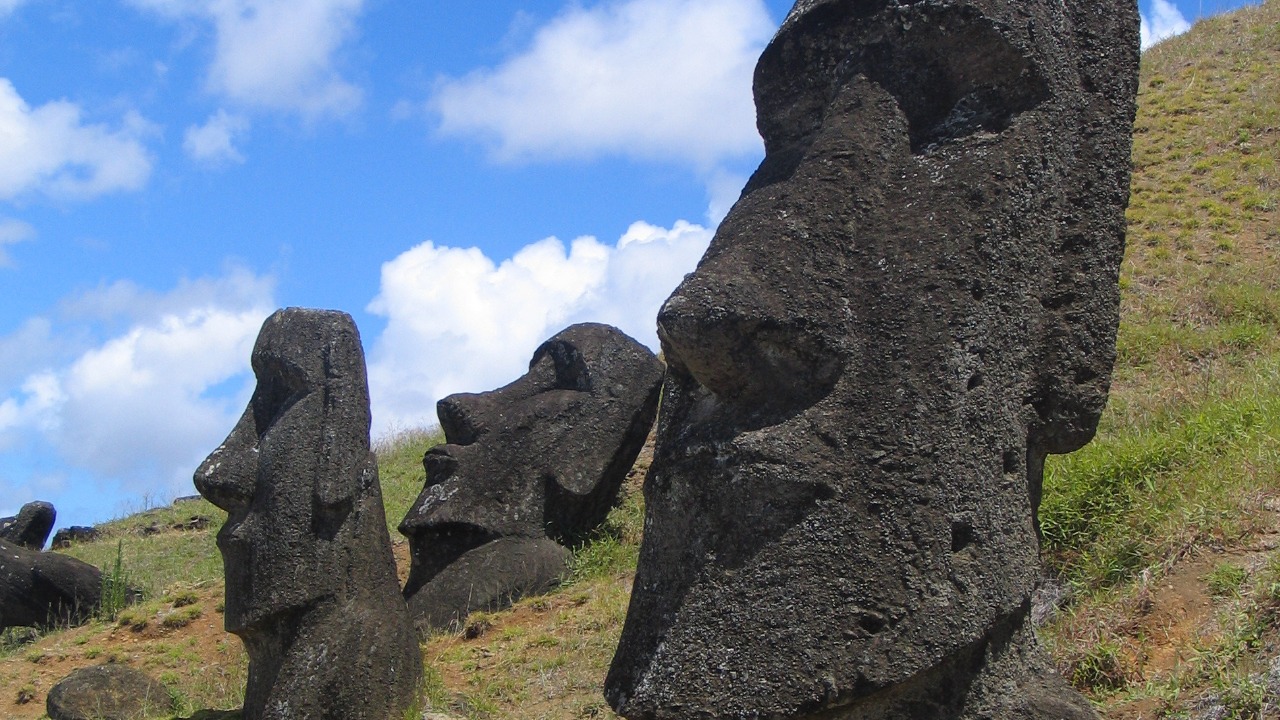
Recent analysis of ancient sediments on Easter Island has challenged the long-held belief that the island’s society collapsed due to overexploitation of resources, a theory known as ‘ecocide’. Instead, the study, published on November 6, 2025, suggests that the island’s forests were resilient and that other factors may have contributed to the society’s downfall. This builds on a 2019 rethinking of the island’s history, which questioned the role of deforestation and incorporated broader ecological and cultural data. These findings provide a new perspective on the decline of the Rapa Nui society in the 17th and 18th centuries.
The Ecocide Narrative’s Origins
The idea that the inhabitants of Rapa Nui caused their own downfall through overexploitation of resources was first popularized by 18th-century European explorers. Jacob Roggeveen, who visited the island in 1722, described a barren landscape, devoid of trees. This narrative was later reinforced by 20th-century theorists like Jared Diamond, who in his book “Collapse” attributed the society’s downfall to the destruction of the palm forests by AD 1650. However, these theories did not take into account the evidence from ancient sediments that contradicts the idea of rapid deforestation.
The ecocide narrative has had a significant cultural impact, being used as a warning about the dangers of environmental destruction. However, early models of the island’s history did not include data on pollen from before European contact, which could provide crucial information about the state of the island’s vegetation.
Early Challenges to Overexploitation Theories
The 2019 rethinking of Easter Island’s history challenged the idea of unchecked logging by the island’s inhabitants. Instead, it suggested that the Polynesian voyagers who settled the island around AD 1200 intentionally managed the forests. Archaeological evidence supports this theory, showing that the islanders used rock mulching techniques to preserve soil fertility, even as they partially deforested the island.
The introduction of rats by the Polynesians has also been suggested as a factor in the island’s deforestation. Evidence of gnaw marks on nuts suggests that the rats may have contributed more to the loss of trees than human activity by the 15th century.
Sediment Cores as Time Capsules
Sediment cores from lakes and soils on Rapa Nui provide a record of the island’s environmental history over the past 800 years. These cores contain pollen, charcoal, and nutrient records that offer direct evidence against the idea of rapid deforestation. The November 6, 2025 study of these sediments identified phases of forest regrowth after initial clearing, suggesting that the islanders were adapting their land use rather than causing an ecological collapse by AD 1600.
Advances in coring techniques have allowed researchers to study sites like Lake Rano Aroi in greater detail. These studies have revealed spikes in erosion that were driven by climate factors, rather than human activity.
Revealing Resilient Ecosystems
The sediment cores show that palm pollen persisted on the island until the late 17th century, contradicting claims of island-wide deforestation by AD 1400. This evidence supports the findings of the 2025 study, which suggested that the island’s ecosystems were more resilient than previously thought.
The dominance of grass and fern pollen in the cores suggests that the islanders were managing grasslands for agriculture. This would have allowed them to support a population of up to 17,000 people without causing a total ecological collapse. As the researchers put it, “The sediments show a story of resilience, not ruin.”
External Pressures Over Internal Blame
The sediment cores also provide evidence of external pressures that may have contributed to the decline of the Rapa Nui society. Charcoal layers in the sediments indicate that there were natural droughts around AD 1680, which could have been a key trigger for the society’s decline. These droughts would have been exacerbated by diseases introduced by European contact after 1722.
Invasive species, such as the Polynesian rats mentioned in the 2019 review, could also have played a role in the island’s deforestation. The rats are believed to have consumed seeds at a rate that resulted in an 80% failure of reforestation. Oceanographic data, integrated with the sediment records, also suggests that cooler ocean currents reduced rainfall by 30% in the 18th century, a factor that has been overlooked in ecocide-focused histories of the island.
Implications for Rapa Nui Heritage
The revised timeline of Easter Island’s history validates the oral histories of the Rapa Nui people. These histories portray the islanders as skilled navigators who arrived around AD 1200 and constructed the island’s famous moai statues in a sustainable way. This new understanding of the island’s history has led to policy shifts, including changes to the management of the island’s UNESCO World Heritage Site, which now emphasizes climate adaptation rather than blaming the islanders for their own downfall.
Future research on the island will likely build on the 2019 framework for holistic island studies. For example, DNA from the sediments could be used to trace interactions between humans and plants on the island. This could provide further insights into the island’s history and the resilience of its ecosystems.
More from MorningOverview